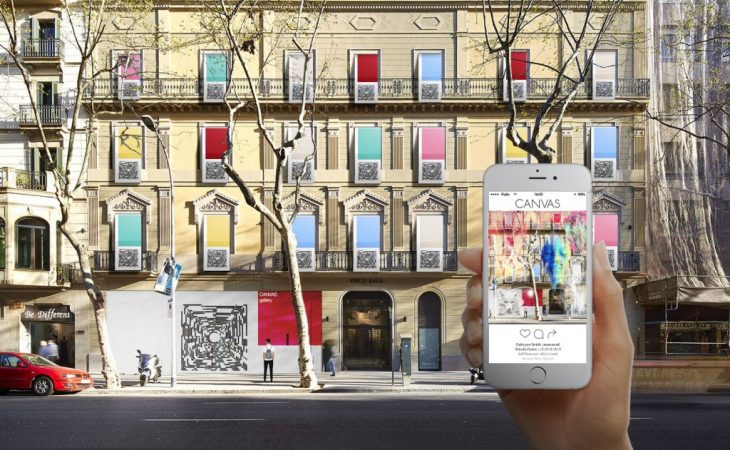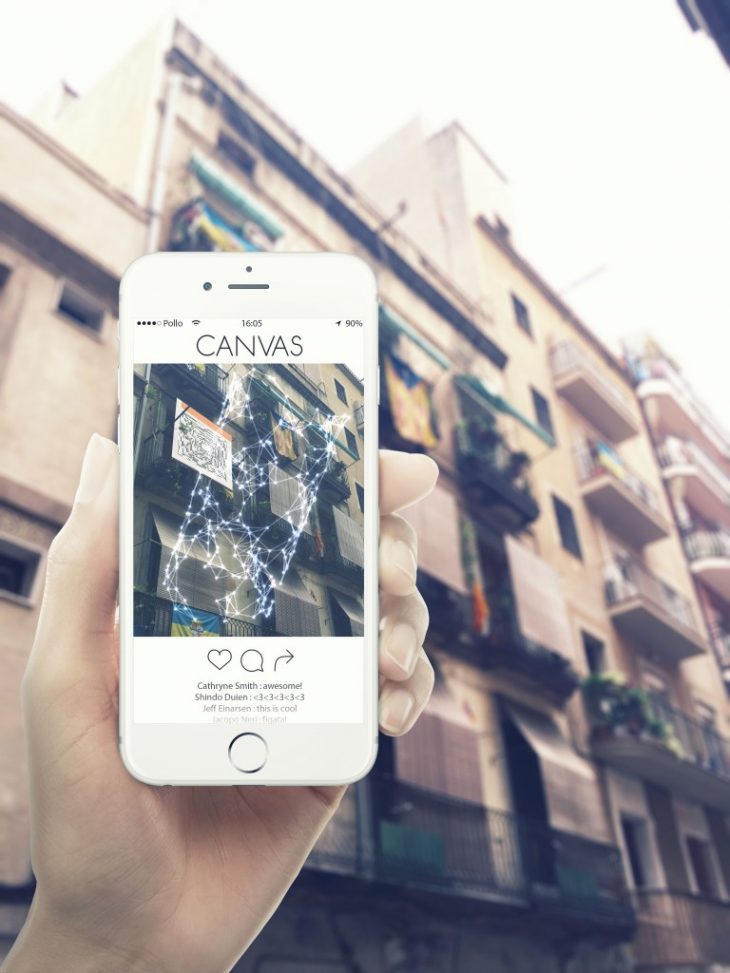
The Canvas project Iacopo Neri and Sylvain Totaro
The facade is a major element constituting the urban landscape.
In the most recent periods, the need of density in cities was mainly solved by elevating our traditional building morphology. This phenomenon increased the importance and the presence of this vertical element. However the facade can be experiment by the body only in a little proportion out off the total surface. This part is more often the ground floor and, when the typology allows, the balcony areas.
Carrying a huge visual impact onto the urban landscape and being physically misused by people, the facade has the main role of ornament support: it gives a visage to the city. This is the reason why actual urban conservation regulations are involved in making the whole city homogeneous.
However, such restrictions act for a non-appropriation of the facade by citizens.
Furthermore, it turns them into a screen of a luxuriant, but dead and frozen, image of the tradition.
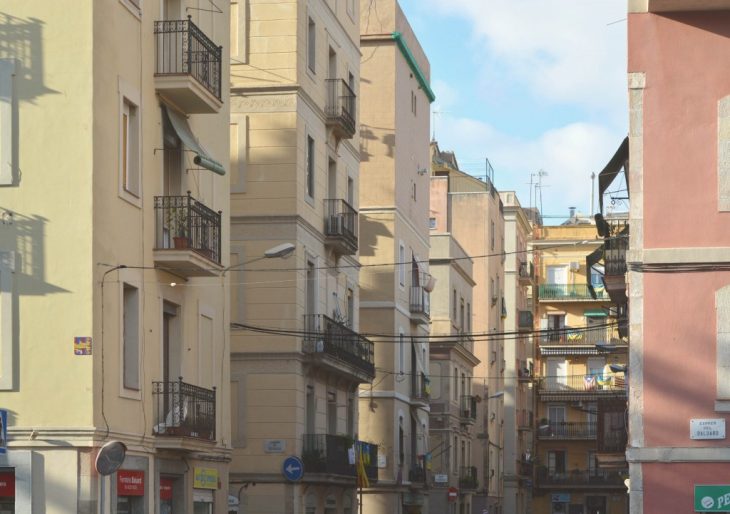
Talking about the function, the facade is the inter mediate step between public and private space.
It can be considered as a guardian, which provides safety from the uncertainty of the city, as a curtain, providing different degrees of intimacy for people living in… All the operational potential of the facade is dedicated to the private area of the living place. To the public space remains only the ground floor and the visual delight of the upper levels, providing the ornamental facade.
In the meantime, facade can be also the support of expression as we notice in the street art field, where the walls of the city become the playground and the canvas of anonymous artists. In a more spontaneous way, we can talk about the numerous Catalan or even district flags that we found hanged on the balconies of people living in the barceloneta district. But also, the protest banners telling the mood of citizens about a special public concerned topic. All those examples led us the reconsideration of the facade as a space of interaction between citizens. An ideal surface of expression which shifts the private sector of living in the action of people onto the public space.
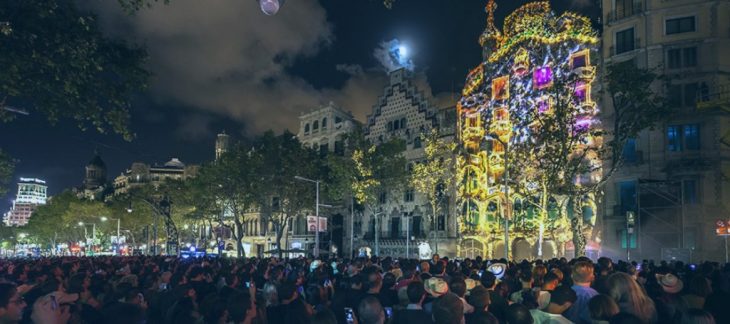
Concomitantly, the creative field is very well established in Barcelona. Being one of the most recognized art place in the world, Barcelona gathers strong communities of creators, art places and art lovers. Faithful to its vanguard attitude, the art scene of Barcelona developed an important community of visual artists involved in re-shaping the boundaries of the art field by including new technologies as mediums of art expression. In this sense Barcelona hosts each year different events or international festivals (MIRA, Llum…) where people can be in completely immersed in the digital art production.
However, this emerging art branch is underestimated as they don’t have proper spaces to exhibit their work, except temporary events or web sites such as pinterest, behance, cargo… Face to this issue of lack of physical spaces dedicated to show digital art productions, the Canvas project proposes to question an existing component of the actual Barcelona’s facade, such as the louvers, to create a new support for art display. The aim is to transform the city into a giant digital museum.
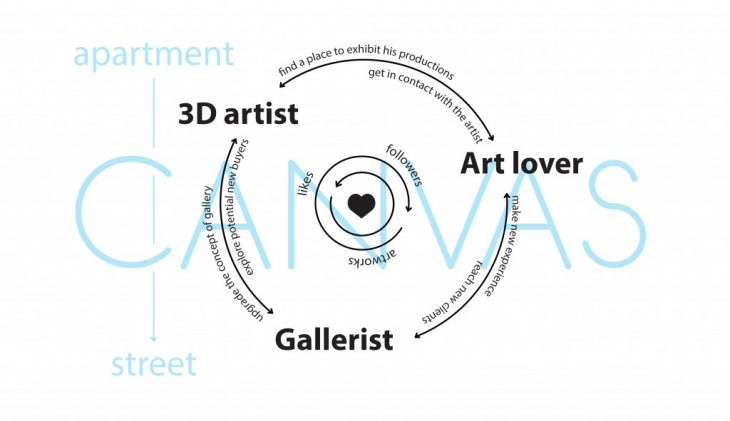
We provide a Canvas of which the neutral design allows an easy integration onto the city facades. Nevertheless, this design can be customized through a range of colors according to the user desire or the needs of the digital art project that the person wants to show with his canvas. The physical Canvas object hosts the ID code, or C, which refers to the digital art production that the user uploads on the global interconnected Database.
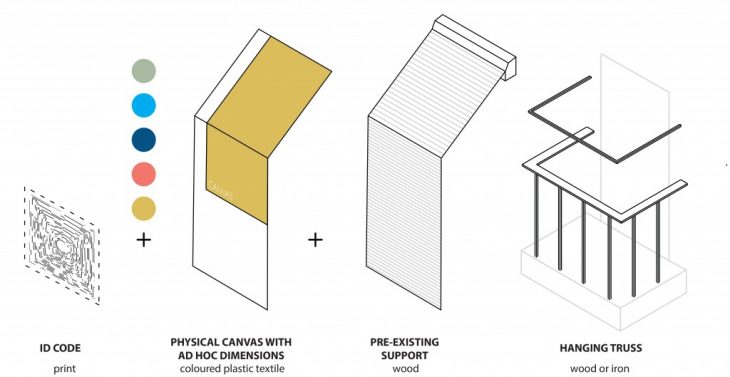
Each C code is unique, it refers to a specific digital content and has a specific localisation. Those two features can be updated anytime by the canvas user. The Canvas App can be downloaded by anyone, it allows every Canvas App user to see the gallery of digital artists at the specific location of their Canvas Code. Once the App is able to read the code, it provides to the user an augmented reality scene within the city streets, where the digital content of the creator is integrated into the urban context. This new digital augmented reality layer applied onto the actual physical city is accessible through the camera of your smartphones using the Canvas App. Moreover, the same App provides the geo-location of digital art pieces present in the city, as well, in order to make easier your outside artistic promenade.
The geo-locations can be shared while the digital contents are commented and liked. In that sense, unknown digital artists can enjoy the popularity of viral trends as their digital productions are being shared and commented throughout the city, and the web, thanks to Canvas.
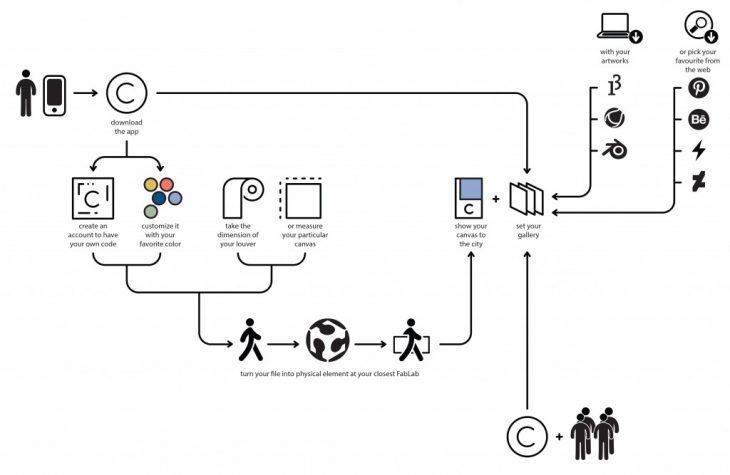
Canvas is a way to enjoy a museum experience in our daily-city-busy life. It is also an ploy and an occasion to use the elevation of the facade as an expressive, creative and powerful display. It shows that the ground floor is not necessarily the only part of the facade able to activate the public space. It is a way to link digital art production with the physical public space.
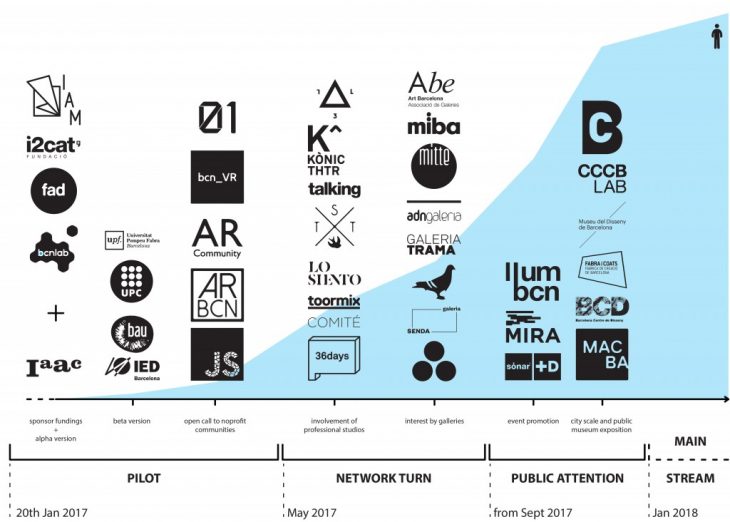
As an extension, Canvas can be implemented as well for specific digital art creators purposes and for professional galleries which want to show digital art production on their facade as a sample of the exhibition inside. Canvas can also be used by the city council itself, in collaboration with bigger art places in order to turn an entire unused streets into brand new museum. It finds an application for anyone who wants to share digital art content and be part of the Canvas Community.
–
</p>
CANVAS is a project of IaaC, Institute for Advanced Architecture of Catalonia developed at Master in City and Technology, in 2016 by:
Student: Iacopo Neri, Sylvain Totaro
Faculty: Marcella del Signore
